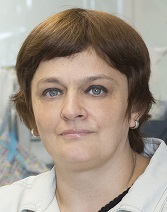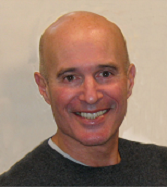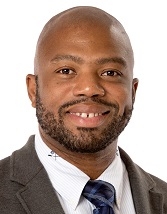
DR MARK A. WAINBERG LECTURE
Friday, May 1 – 10:15-11:15
Dr Cécile Tremblay
(Click here to view the presentation video)
 Biography: Dr Cécile Tremblay is an infectious diseases/medical microbiologist specialist and the Université de Montréal/Pfizer Chair on Translational HIV Research. She is full professor in the Department of Microbiology, Immunology, and Infectious Diseases at University of Montreal and a researcher at Centre de Recherche du Centre Hospitalier de l’Université de Montréal (CHUM). She obtained her M.D. at University of Montreal in 1992. She did her residency in medical microbiology and infectious diseases at University of Montreal and was certified by the Royal College of Physician of Canada in 1997. She then pursued a post-doctoral fellowship in HIV research at Massachusetts General Hospital, Harvard Medical School. She came back to Montreal in 2001, where she developed a research program focused on studying the virological determinants of HIV disease progression as well as molecular pathways involved in drug resistance. She is the founder and director of a pan-Canadian cohort of HIV-infected subjects with slow disease progression, which is a collaborative effort by Canadian researchers to better understand HIV immunopathology. She is also coordinating a research initiative on premature aging and cardiovascular disease in HIV in Canada. From 2012 to 2015, she served as Director of the Laboratoire de Santé Publique du Québec (Quebec Public Health Laboratory). During her mandate, she developed a research program on HIV epidemiology in Québec and was responsible for the coordination of the laboratory response to biological threats and emerging infectious diseases.
Biography: Dr Cécile Tremblay is an infectious diseases/medical microbiologist specialist and the Université de Montréal/Pfizer Chair on Translational HIV Research. She is full professor in the Department of Microbiology, Immunology, and Infectious Diseases at University of Montreal and a researcher at Centre de Recherche du Centre Hospitalier de l’Université de Montréal (CHUM). She obtained her M.D. at University of Montreal in 1992. She did her residency in medical microbiology and infectious diseases at University of Montreal and was certified by the Royal College of Physician of Canada in 1997. She then pursued a post-doctoral fellowship in HIV research at Massachusetts General Hospital, Harvard Medical School. She came back to Montreal in 2001, where she developed a research program focused on studying the virological determinants of HIV disease progression as well as molecular pathways involved in drug resistance. She is the founder and director of a pan-Canadian cohort of HIV-infected subjects with slow disease progression, which is a collaborative effort by Canadian researchers to better understand HIV immunopathology. She is also coordinating a research initiative on premature aging and cardiovascular disease in HIV in Canada. From 2012 to 2015, she served as Director of the Laboratoire de Santé Publique du Québec (Quebec Public Health Laboratory). During her mandate, she developed a research program on HIV epidemiology in Québec and was responsible for the coordination of the laboratory response to biological threats and emerging infectious diseases.
She has been involved in several initiative on HIV prevention both in West Africa as well as in Canada. She was the Canadian principal investigator for the Ipergay trial which demonstrated the efficacy of pre-exposure prophylaxis in a population of gay men. She has set up a prospective cohort of MSM to study the uptake of PrEP and its impact on HIV incidence. She is piloting several projects on HIV prevention in various key populations such as people from HIV endemic countries living in Quebec and vulnerable indigenous populations. She is the P.I. of an Ebola vaccine trial in HIV-infected individuals. She has recently stepped down as Director of the Réseau SIDA-Maladies Infectieuses supported by the Fonds de Recherche du Québec en Santé.
HIV Elimination: Dare to Dream
We have come a long way in our understanding of what affects HIV transmission and how we can prevent it. These accomplishments are the results of efforts from dedicated basic scientists, clinicians and most of all, people living with HIV who have contributed their vision, their bodies, and their lives towards this progress. Dr. Mark Wainberg always championed this dynamic relationship between scientists and the community to foster novel ideas which corresponds to patients’ needs. Dre Tremblay also believes in this model and has been collaborating with community members since the start of her research career, first studying viral reservoirs in search of a cure, studying viral resistance to discover new and better drugs. More recently, she has been involved in a pivotal trial on PrEP which has led to the wildly recognized role of PrEP in HIV prevention and its unprecedented uptake, particularly in men who have sex with men. She has pursued her efforts to implement a PrEP program in the community but there are still several barriers to universal access for those who need it.
Furthermore, her research has focused on the quality of life of people living with HIV, working on understanding the mechanisms leading to premature co-morbidities, particularly premature cardio-vascular disease, trying to identify biomarkers that could help identify individuals who are at higher risk for these complications and help prevent them. In this presentation, we will review the challenges that lie ahead to improve HIV primary, secondary and tertiary prevention in order to achieve our goal of a world free of HIV.
Learning Objectives:
- Discuss the evolution of HIV prevention strategies over time and what the future holds
- Outline the pathophysiological mechanisms affecting the health of people living with HIV
- Identify priority research areas in HIV primary, secondary, and tertiary prevention fields
BASIC SCIENCES
Friday, May 1 – 11:30-12:30
Dr Petronela Ancuta
(Click here to view the presentation video)
 Biography: Dr Petronela Ancuta is Professor of Immunology in the Département de microbiologie, infectiologie et immunologie, Faculté de médicine, Université de Montréal, and Director of the laboratory «Cell Trafficking and HIV Pathogenesis» at the CHUM Research Centre since 2006. After M.Sc. training in Biology at the Université de Bucharest, Romania (1992), she obtained a Ph.D. in Immunology from the Université de Paris Sud XI, Orsay, France (2000), and underwent postdoctoral training at Harvard Medical School, Boston, MA, USA (2001-2006). Her laboratory investigates the contribution of CD4+ T-cells and myeloid cells to viral reservoir persistence during antiretroviral therapy in HIV cure/remission strategies.
Biography: Dr Petronela Ancuta is Professor of Immunology in the Département de microbiologie, infectiologie et immunologie, Faculté de médicine, Université de Montréal, and Director of the laboratory «Cell Trafficking and HIV Pathogenesis» at the CHUM Research Centre since 2006. After M.Sc. training in Biology at the Université de Bucharest, Romania (1992), she obtained a Ph.D. in Immunology from the Université de Paris Sud XI, Orsay, France (2000), and underwent postdoctoral training at Harvard Medical School, Boston, MA, USA (2001-2006). Her laboratory investigates the contribution of CD4+ T-cells and myeloid cells to viral reservoir persistence during antiretroviral therapy in HIV cure/remission strategies.
Targeting the Clock Inside Th17 Cells for HIV-1 Cure
This presentation will identify the current knowledge on HIV reservoir persistence during antiretroviral therapy (ART), with a focus on CD4+ T-cell subsets carrying HIV reservoirs. Among CD4+ T-cells, Th17 cells mediate immunity against pathogens at mucosal surfaces, with their massive depletion in people living with HIV (PLWH) causing microbial translocation and non-AIDS co-morbidities. Dr Ancuta and other researchers provided evidence demonstrating that HIV efficiently replicates in Th17 cells, thus causing their depletion; ART fails to restore Th17 cells in chronically-infected subjects; and a fraction of Th17 cells are long-lived and contribute to viral reservoirs persistence during ART. In addition, Th17 cells represent the first infection targets during vaginal transmission; also, Th17 cells express drug efflux pumps that may render the intracellular concentrations of antiretroviral (ARV) drugs suboptimal.
Furthermore, Dr Ancuta will present findings obtained by combining a genome-wide transcriptional approach and a meta-analysis using the NCBI HIV interactor database that allowed us to identify a unique molecular signature associated with HIV permissiveness in Th17 cells. Briefly, this signature included the circadian clock machinery that represents a new previously unrecognized regulator of HIV replication in Th17 cells. The circadian clock machinery components and regulators act as positive and negative regulators of gene transcription. In line, multiple physiological processes including cell trafficking, TCR signaling threshold, and chromatin remodeling undergo circadian variations. Studies in mice demonstrated that the expression of RORγt, a key transcription factor for Th17 differentiation, is controlled by the circadian clock machinery. Her groups’ most recent results support the role of the circadian clock machinery in regulating HIV transcription, a key step of the viral replication cycle not targeted by current ARVs. The relevance of Th17-targeted therapeutic interventions for HIV remission/cure will be discussed.
Learning Objectives:
- Identify the current knowledge on HIV reservoir persistence during antiretroviral therapy (ART), with a focus on CD4+ T-cell subsets carrying HIV reservoirs
- Examine findings obtained by combining a genome-wide transcriptional approach and a meta-analysis using the NCBI HIV interactor database that led to the identification of new potential HIV drug targets
EPIDEMIOLOGY & PUBLIC HEALTH SCIENCES
Friday, May 1 – 14:30-15:30
Dr José M. Zuniga
(Click here to view the presentation video)
 Biography: Dr José M. Zuniga was appointed President of the International Association of Providers of AIDS Care (IAPAC) in 1999 after having served as IAPAC’s Vice President for Programs, charged with advancing the association’s medical education and technical assistance initiatives. Prior to joining IAPAC, Dr. Zuniga served was Director of Strategic Communications at the AIDS Action Council in Washington, D.C., following his military service in the U.S. Army, including combat duty in the Persian Gulf during Operations Desert Shield and Desert Storm that earned him a Combat Medical Badge.
Biography: Dr José M. Zuniga was appointed President of the International Association of Providers of AIDS Care (IAPAC) in 1999 after having served as IAPAC’s Vice President for Programs, charged with advancing the association’s medical education and technical assistance initiatives. Prior to joining IAPAC, Dr. Zuniga served was Director of Strategic Communications at the AIDS Action Council in Washington, D.C., following his military service in the U.S. Army, including combat duty in the Persian Gulf during Operations Desert Shield and Desert Storm that earned him a Combat Medical Badge.
Dr Zuniga’s earned a Master of Public Health (MPH) degree in Health Policy, and a Doctor of Philosophy (PhD) in Human Development and Social Policy. He lectures at several academic institutions; has been published in various journals; authored thematic chapters for four books; and edited four thematic books – “The HIV Pandemic” (Oxford University Press [OUP], 2006); “Decade of HAART” (OUP, 2008); “Advancing the Human Right to Health” (OUP, 2013); and “Avoiding AIDS Armageddon” (OUP, 2019). He is Editor Emeritus of the Journal of the International Association of Providers of AIDS Care (JIAPAC), and he serves on the Editorial Advisory Board of the International Journal of HIV/AIDS Prevention, Education, and Behavioural Science.
Dr Zuniga is an IAPAC Trustee, a technical consultant for the Collaborative Institute of Virology, and a member of the Joint United Nations Programme on HIV/AIDS (UNAIDS) Scientific and Technical Advisory Committee. He is one of the co-signers of the Paris Declaration on Fast-Track Cities and spearheads IAPAC’s efforts as the core technical partner for the Fast-Track Cities Initiative. Dr. Zuniga routinely advises United Nations health agencies, including the World Health Organization (WHO) and its regional offices, as well as bilateral institutions such as the US President’s Emergency Plan for AIDS Relief (PEPFAR). He is a member of the American Public Health Association (USA), the National Hispanic Medical Association (USA), and senior associate member of the Royal Society of Medicine (UK).
90-90-90 and the Trajectory Towards HIV Epidemic Control
The Joint United Nations Programme on HIV/AIDS (UNAIDS) proposed a set of programmatic targets in 2014 that, leveraging treatment as prevention (TasP), aimed to place countries (and municipalities) on a trajectory towards achieving HIV epidemic control by 2020. Over the past several years, several countries and municipalities have attained one or more of the 90-90-90 targets. Yet, achieving HIV epidemic control requires more than just reaching these targets. Critical to a calculus for successful HIV responses are data-driven, equity-based approaches that take into account intersectional barriers, including persistent stigma against people living with and affected by HIV. Moreover, pre-exposure prophylaxis (PrEP) has proven to be an important adjunct to TasP, reducing HIV incidence in tandem with reductions in AIDS-related mortality achieved through TasP. What makes up the calculus for a successful HIV response? What lies beyond the 90-90-90 targets? And, how do we define and make reality the concept of “HIV epidemic control”?
Learning Objectives:
- Recognize the 90-90-90 targets as a catalyst for data-driven HIV responses
- Identify best/good practices in closing gaps across the HIV care continuum
- Define HIV epidemic control using metrics that complement existing indicators
- Describe the role of PrEP as an adjunct to TasP to achieve HIV epidemic control
CLINICAL SCIENCES
Saturday, May 2 – 10:00-11:00
Dr Martin Markowitz
(Click here to view the presentation video)
 Biography: Dr Martin Markowitz is a graduate of Stanford Medical School and completed his postgraduate training in Hematology/Oncology at Cornell Medical College and Infectious Diseases at New York University. He has worked at the Aaron Diamond AIDS Research Center (ADARC) since 1992 and is the Anna and George Bobolas Professor of Clinical Research And Infectious Diseases at the Aaron Diamond AIDS Research Center At Columbia University Irving Medical Center.
Biography: Dr Martin Markowitz is a graduate of Stanford Medical School and completed his postgraduate training in Hematology/Oncology at Cornell Medical College and Infectious Diseases at New York University. He has worked at the Aaron Diamond AIDS Research Center (ADARC) since 1992 and is the Anna and George Bobolas Professor of Clinical Research And Infectious Diseases at the Aaron Diamond AIDS Research Center At Columbia University Irving Medical Center.
Research interests have included HIV viral dynamics in vivo, the pathogenesis and treatment of acute HIV-1 infection, the fitness and transmission of drug resistant HIV-1, and investigations of numerous novel antiretroviral agents as well as pathogenesis-based interventional trials. He was among the first to discuss HIV-1 cure, and perform trials of therapeutic vaccination and passive immunization as adjuncts to combination antiretroviral therapy. More recently his clinical efforts have moved from treatment to HIV prevention.
Dr Markowitz was among the first investigators to work with long acting antiretrviral agents for HIV prevention. Along with colleagues at ADARC, he worked on pre-clinical studies of long acting cabotegravir (CAB-LA) and was the PI on the Phase 2B safety study of CAB-LA in low risk men. His group has demonstrated efficacy of weekly oral islatravir (ISL) as prevention in preclinical studies in rhesus macaques. The utility of ISL as PEP is currently being explored.
Dr Markowitz has co-authored nearly 200 peer-reviewed publications in medical journals. He serves as a peer reviewer for a wide spectrum of journals and is a former chair of the AIDS Research Review Committee for the National Institutes of Health as well as private funding institutions.
Antiretroviral Therapy for Treatment and Prevention: Beyond Daily Oral Therapy – A New Frontier
At the completion of the session, participants will be knowledgeable about the current recommendations for cART in HIV-infected individuals, on preclinical and clinical data on the use of long acting Cabotegravir and Islatravir for the prevention of HIV infection, on recent data on long acting Cabotegravir and Rilpivirine and about new molecules (new long acting agents and broadly neutralizing antibodies (bNAbs)) in the pipeline for treatment and prevention of HIV infection.
Learning Objectives:
- Illustrate current recommendations for cART in HIV-infected individuals
- Review recent data for long acting cabotegravir (CAB LA) and long acting rilpivirine (RPV LA) leading for approval of these regimens
- Summarize preclinical and clinical data of Cabotegravir LA and Islatravir for the prevention of HIV infection
- Discuss briefly about new molecules in the pipeline for treatment and prevention (broadly neutralizing antibodies bNAbs and new long acting agents)
SOCIAL SCIENCES
Saturday, May 2 – 10:00-11:00
Dr LaRon Nelson
(Click here to view the presentation video)
 Prof. Nelson is Associate Dean for Global Health & Equity and the Independence Foundation Associate Professor at the Yale School of Nursing. He is also the OHTN HIV Research Chair in Implementation Science with Black Communities at the MAP Centre for Urban Health Solutions in Toronto where he is leading hybrid implementation/effectiveness trials to optimize HIV prevention and treatment outcomes in Black communities. Nelson currently co-chairs HPTN 096, a multi-city community-randomized trial testing the efficacy of a multi-level health equity intervention to reduce HIV incidence among Black MSM. Prof. Nelson is an elected fellow in the American Academy of Nursing.
Prof. Nelson is Associate Dean for Global Health & Equity and the Independence Foundation Associate Professor at the Yale School of Nursing. He is also the OHTN HIV Research Chair in Implementation Science with Black Communities at the MAP Centre for Urban Health Solutions in Toronto where he is leading hybrid implementation/effectiveness trials to optimize HIV prevention and treatment outcomes in Black communities. Nelson currently co-chairs HPTN 096, a multi-city community-randomized trial testing the efficacy of a multi-level health equity intervention to reduce HIV incidence among Black MSM. Prof. Nelson is an elected fellow in the American Academy of Nursing.
Getting to Zero HIV Infections among Black MSM: Evidence-Based Approaches, Emancipation-Based Practices and Equity-Focused Impact
HIV continues to disproportionately affect Black communities in Canada and the United States. Further, there is an uneven distribution of new HIV infections in Black men who have sex with other men (MSM). Even though condomless anal intercourse is the primary route of transmission for HIV among MSM, evidence indicates that behavioral risk‐based explanations alone insufficiently account for disproportionate rates of HIV among Black MSM. Mounting research implicates social and structural factors as major contributors to racial disparities in the patterns of pre-exposure prophylaxis use and HIV viral suppression among MSM. This demands that HIV research must contend with the ways in which dominant social and cultural structures limit possibilities for the gains in biomedical prevention tools to benefit Black MSM. HIV prevention research cannot offer any serious solutions to the epidemic in Black gay and non‐gay‐identified MSM as long as it remains solely interested in “HIV status” without attention to improving sociopolitical and economic status. In this lecture, Professor Nelson will make the case that to stop new HIV infections among Black MSM, research can no longer privilege intellectual curiosity and discovery over the need to affect broader social consequences. This includes addressing the social determinants that converge to marginalize Black MSM and increase their odds of acquiring HIV. The argument is premised on evidence that inequities in HIV are not simply the product of individual-level behavioral mechanisms of viral transmission, but that are perpetuated by actors that are complicit through complacency with anti-Black racism and homophobia institutionalized in the health and research systems. The presentation will offer examples of current efforts to implement multi-level research designs and interventions that promote individual-level behavior changes, network-level asset building and simultaneously targeting changes in healthcare conditions that contribute to HIV inequities in Black MSM.
Learning Objectives:
- Identify social/structural factors that impede HIV pre-exposure prophylaxis use among Black MSM.
- Identify the limitations of risk-reduction only approaches to HIV prevention research with Black communities.
- Understand the differences between individual-level behavioral approaches and multi-level social/behavioral/clinical approaches in HIV prevention research.
- Describe an example of system-level implementation of evidence to change socio/structural environmental conditions in healthcare delivery systems.
